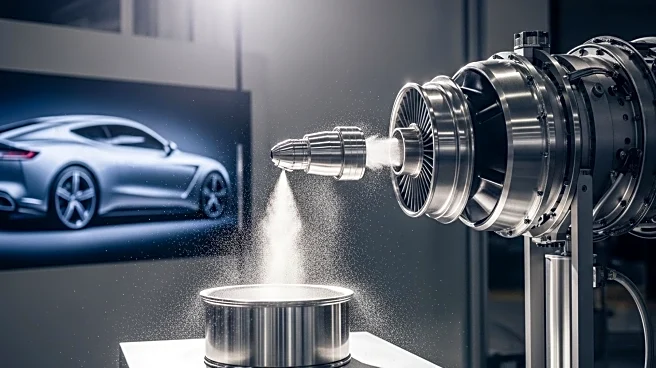What's Happening?
QYResearch has released a comprehensive report on the global Pipe Self-Regulating Heating Cable market, forecasting significant growth from 2025 to 2031. The market, valued at approximately $852 million in 2024, is expected to reach $1,242 million by 2031, with a compound annual growth rate (CAGR) of 6.1%. The report provides an in-depth analysis of market size, share, demand, and industry development status. It segments the market by type, application, and region, offering insights into lucrative opportunities. Key players in the market include nVent, Emerson, Bartec, and others, with strategic developments such as mergers and acquisitions highlighted.
Why It's Important?
The projected growth in the Pipe Self-Regulating Heating Cable market is significant for industries reliant on temperature maintenance, such as oil and gas, chemicals, and food and beverages. The increase in market size suggests a rising demand for efficient heating solutions, driven by industrial expansion and the need for energy-efficient technologies. Companies in this sector stand to benefit from increased sales and market share, while new entrants may find opportunities in emerging markets. The report's insights into competitive dynamics and market segmentation can guide strategic decisions for stakeholders aiming to capitalize on growth trends.
What's Next?
As the market evolves, companies are likely to focus on innovation and strategic partnerships to enhance their product offerings and expand their market presence. The report suggests that understanding regional market dynamics will be crucial for businesses looking to enter or expand in specific areas. Additionally, ongoing technological advancements and regulatory changes could influence market conditions, prompting companies to adapt their strategies accordingly. Stakeholders should monitor these developments to align their operations with market demands and regulatory requirements.
Beyond the Headlines
The growth of the Pipe Self-Regulating Heating Cable market may also have environmental implications, as these cables are used to prevent freezing and maintain temperatures in pipelines, potentially reducing energy consumption and emissions. The industry's expansion could drive advancements in sustainable heating technologies, aligning with global efforts to reduce carbon footprints. Furthermore, the market's growth could stimulate job creation in manufacturing and research and development sectors, contributing to economic development in regions with significant industrial activity.










